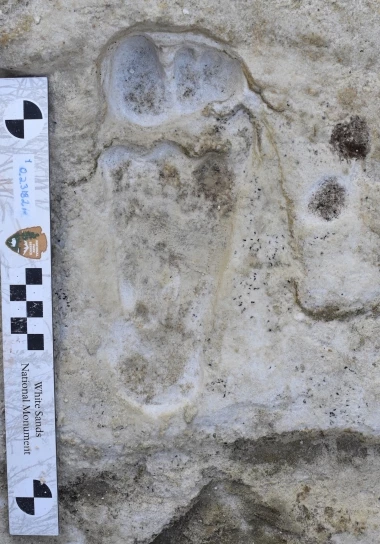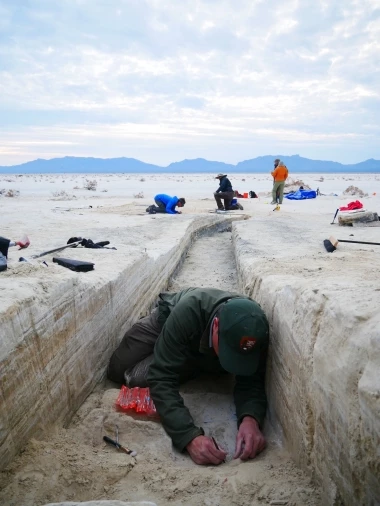Exactly when humans first set foot in North America remains a mystery, but archeologists have now uncovered the oldest unambiguous evidence. A series of unmistakably human footprints have been found at White Sands National Park in New Mexico, and dated to around 22,000 years ago.
For decades, it was thought that the first humans arrived in North America around 13,000 years ago. This early occupation, named the Clovis culture, made itself known through stone tools consistently discovered and dated to between 11,000 and 13,000 years old. In the last 20 years or so, evidence has been mounting that someone was there before the Clovis people, as far back as 16,000 years ago. With the new discovery, the record now stretches back beyond 20,000 years ago.
The find was made in White Sands National Park, which is home to a huge array of fossilized footprints from the Ice Age, including humans, mammoths, saber-toothed cats, dire wolves, giant sloths, and other animals. The newly discovered human tracks were buried within several layers of sediment, in what seem to have been ancient stream beds.
The problem is, it’s tricky to figure out how old any of them are, so the archeologists took samples of seeds embedded in the rock above and below the footprints. Radiocarbon dating revealed that the seeds were between 21,000 and 23,000 years old.
"Our dates on the seeds are tightly clustered and maintain stratigraphic order above and below multiple footprint horizons – this was a remarkable outcome," says Kathleen Springer, co-author of the study.
That makes them the oldest clear evidence of human presence in North America, the team says. Other archeological sites have hinted that humans were around earlier – stone tools found in Texas were dated to around 20,000 years ago, while a cave in Mexico may have been occupied as long as 30,000 years ago – but tools, which are often just pointed rocks, are harder to verify as evidence of humans. Footprints, however, are much clearer, and the new discovery could lend weight to these other sites.

"White Sands provides the first unequivocal evidence for human presence in the Americas during the Last Glacial Maximum," says Dan Odess, co-author of the study. "Not all archaeological sites contain such unequivocal evidence. One reason why this discovery is important is that it makes the idea that other purportedly ancient sites really are evidence for human presence that much more plausible, even if the evidence they contain is less unequivocal. This doesn't mean all of those sites are legitimate, but it means they cannot be dismissed out of hand."
The footprints also give us an intriguing insight into the lives of the people who left them behind. The small size of the tracks seems to suggest they were left mostly by children and teenagers, but the odd adult was around as well.
"The footprints left at White Sands give a picture of what was taking place, teenagers interacting with younger children and adults," says Matthew Bennett, lead author of the study. "We can think of our ancestors as quite functional, hunting and surviving, but what we see here is also activity of play, and of different ages coming together. A true insight into these early people.”
The research was published in the journal Science.
Source: University of Arizona





